"The Morgantown Singing Tree of Diversity" Mosaic
Introduction
Text-to-speech Audio
This intricate mosaic along the Caperton Trail was the collaborative effort of over 300 participants, along with WVU Hospitals and the Morgantown Board of Parks and Recreation. Designed as a flourishing tree, each leaf is unique and represents the variety of people who call Morgantown home. This four-paneled Mosaic is located behind the WVU Visitors Resource Center (1 Waterfront Place # 7).
Images
Location of the mosaic along the Caperton Trail.
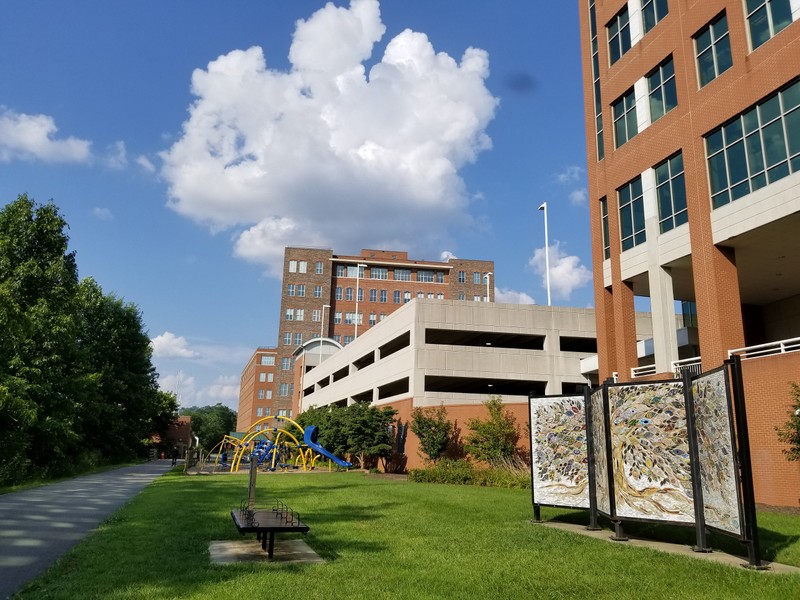
Full mosaic.
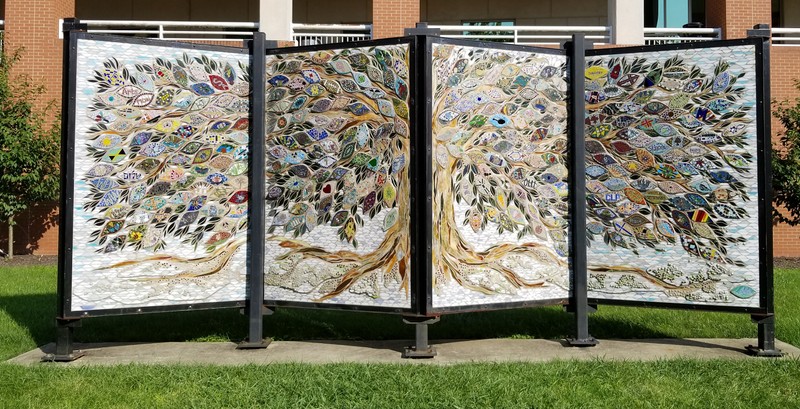
Detail of panel 1.
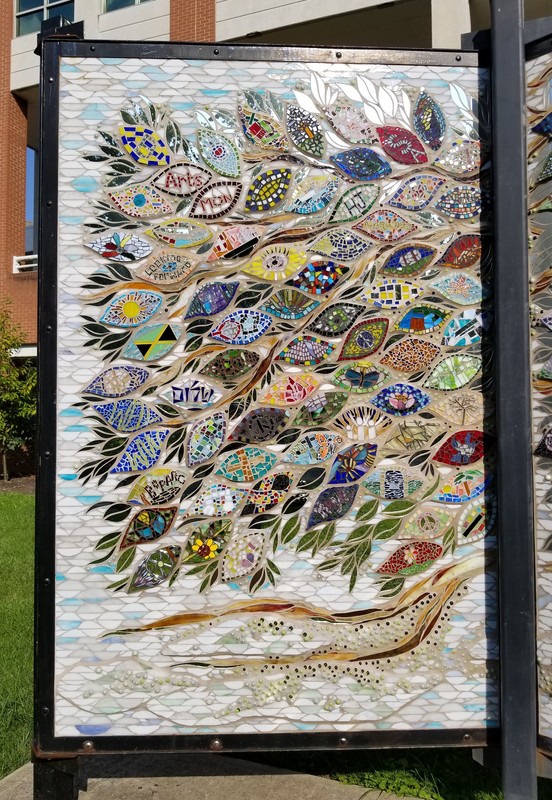
Detail of panel 2.
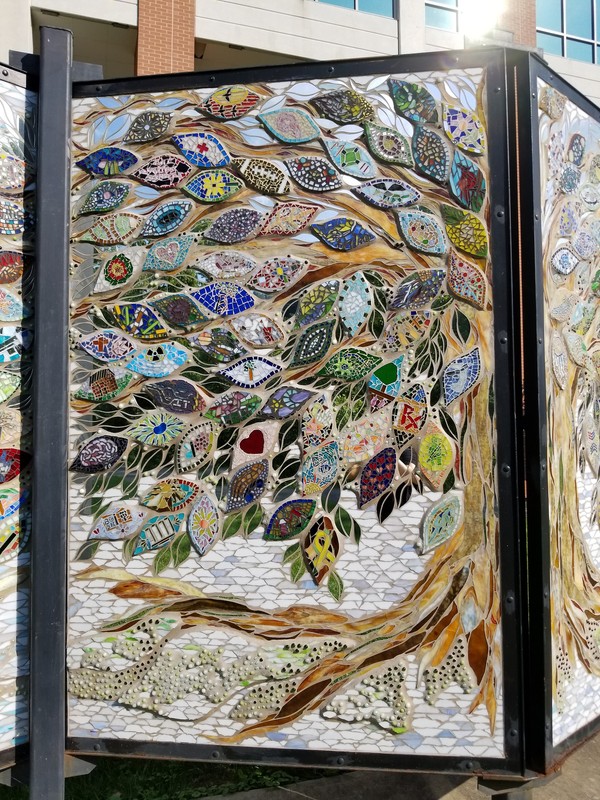
Detail of panel 3.
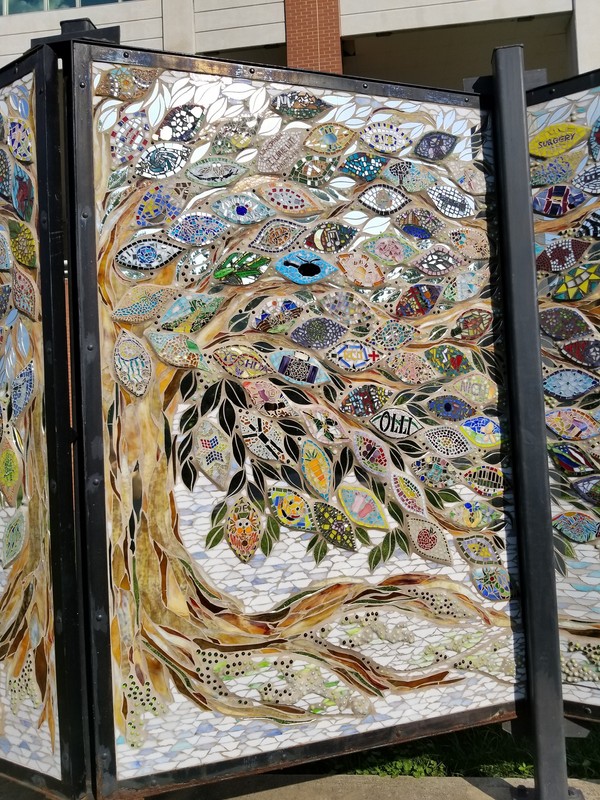
Detail of panel 4.
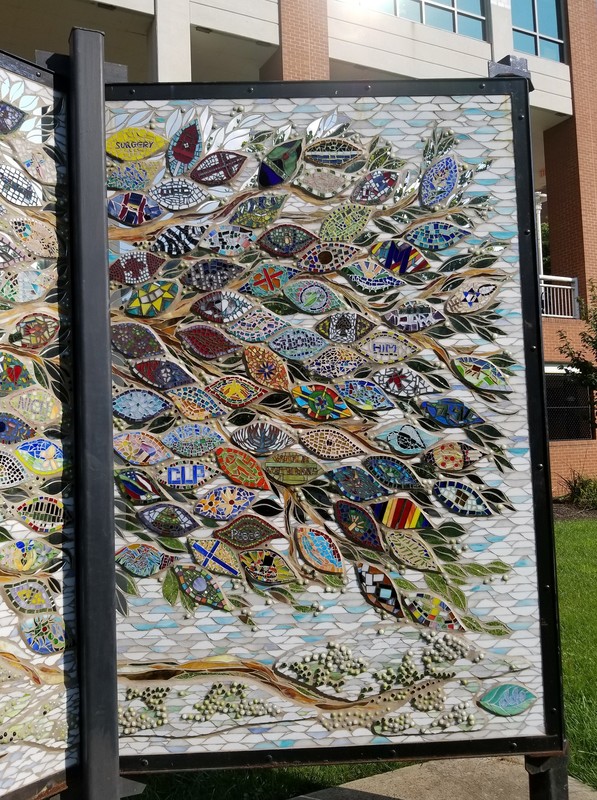
Detail of a few leaves on panel 4.
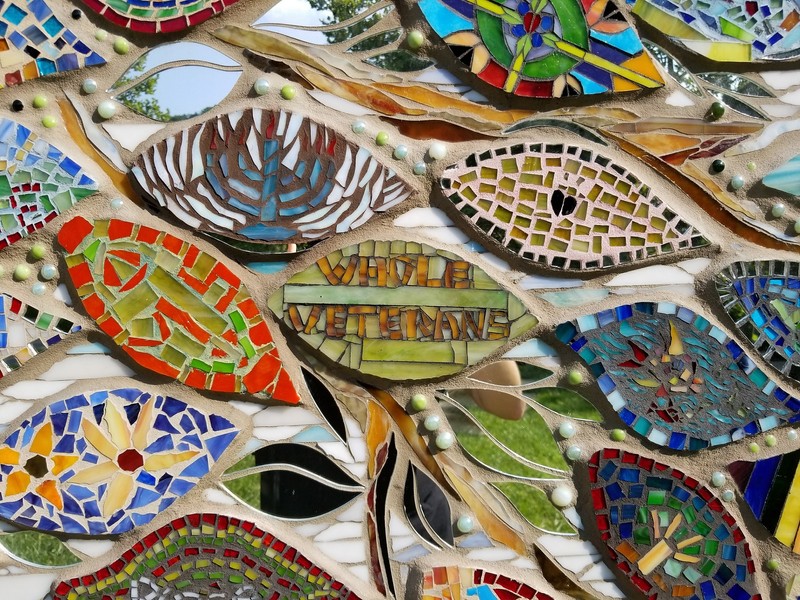
Backstory and Context
Text-to-speech Audio
Artist Debora Palmer led this project in collaboration with over 300 people, WVU Hospitals, and BOPARC. In 1999, artist Laurie Marshall was inspired to begin the "Singing Tree Initiative," a project to make collaborative tree art across the country. Each piece "promotes an understanding of that which unites young people across economic and cultural lines by giving them a common creative experience where they can express their individuality"1.
Palmer and Marshall decided to make a mosaic that intended to show that the strength of Morgantown lies in its diversity. "The Singing Tree of Diversity" took over three years to create, involving workshops in schools and hospitals and open workshops with the Morgantown community. Each leaf on the tree expresses what was unique to a particular workshop participant—personal interests and hobbies, civic and professional organizations, images of nature, religion, politics, nationality, and more. The mosaic tree is made of materials such as glass, mirrors, and ceramics.
Palmer and Marshall decided to make a mosaic that intended to show that the strength of Morgantown lies in its diversity. "The Singing Tree of Diversity" took over three years to create, involving workshops in schools and hospitals and open workshops with the Morgantown community. Each leaf on the tree expresses what was unique to a particular workshop participant—personal interests and hobbies, civic and professional organizations, images of nature, religion, politics, nationality, and more. The mosaic tree is made of materials such as glass, mirrors, and ceramics.
Sources
1) Laurie Marshall's website, describing the Singing Trees project: http://www.soulemporium.com/singingtrees.html
Deborah Palmer, lead artist.
Deborah Palmer, lead artist.
